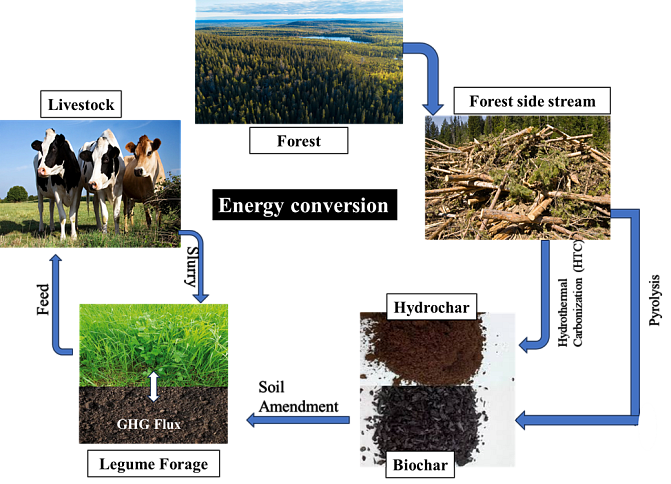Legumes, Char and Sustainable Grass Production
Legumes are fossil free source of nitrogen for agricultural soils. But is this all or do legumes hold more potential to offer for agricultural sustainability?
Agriculture is as a hope for carbon neutral Finland by 2035. This ambitious target, however, confronts some crucial challenges like limiting increasing greenhouse gas (GHG) emissions and soil carbon loss from land use sectors, in diverse agricultural settings and forage-legume system is no-excuse.
Agricultural amendment of char —a pyrolyzed biomass, generally also known as biochar, hold potentials to alleviate the challenges mentioned above. Upon addition, char may shift soil’s physical, chemical, and biological attributes in ways that support carbon and nitrogen cycles, enhancing their utilization by the system and reducing their losses. But this may not be the case all the time. Due to unique characteristics of char itself and char’s interaction with system of interest where it is applied, undesirable results could be expected. This is true across global soils including those of Finland. For instance, contrasting GHG emissions and N transformation has been observed with soil amendments of hydrochar—a char produced via hydrothermal carbonization and biochar—a char that is produced under low to no oxygen conditions.
Almost all biochar studies in Finland are focused on ecosystems other than forage-legume. They show both positive and negative results. Some examples are efficient use of nutrients, increased biomass yield, but also increased CO2 emissions and phosphorous leaching. Forage-legume (red clover and timothy) is also no excuse with this regard. Our own recent study on biochar and hydrochar showed contrasting results. For example, we found reduced CO2 and increased N2O emissions with biochar whereas just the opposite with hydrochar amendment. Given the nature of char’s characteristics and their interactions with the ecosystem, the benefits may vary, hence require further exploration.
Highlights and future scope of usage of biochar in forage-legumes
Future research should first identify site-specific needs such as soil type, nutrient cycles, and climate, before tailoring char production and application. For instance, biochars with high porosity might work best in sandy soils needing better water retention, while hydrochar could suit short-term cropping systems. This site-specific management of char will ensure the desirable benefits in respect to environment and economics, promoting the circular bioeconomy in the region. Further exploring biochar’s role in forage-legume systems can reveal its interactions with legumes, including benefits, limitations, and areas for optimization.
The blog is written in N-Fiksu -project, which is part of Wise nitrogen cycle -project consortium, www.luke.fi/viisastyppikierto. Results of biochar vs. hydrochar amendment on forage-legume are taken from a study that is currently under review in the “Biochar” journal.




